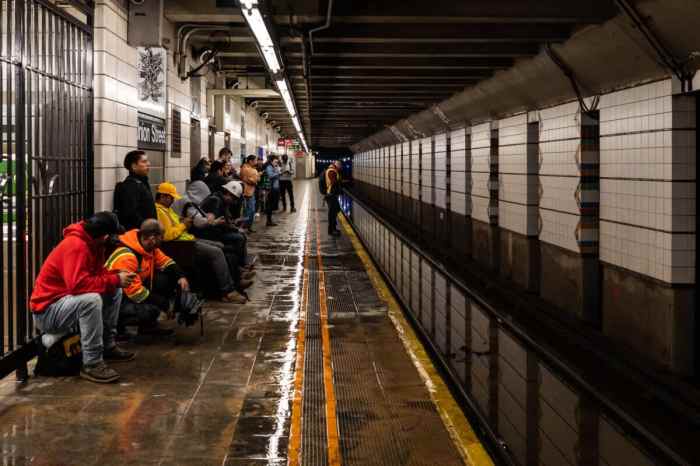By Howard Koplowitz
The demand for bus service in Queens is on the rise, but improvements for the borough are up in the air as the Metropolitan Transportation Authority faces a $1.2 billion budget deficit.
Hopes for bus service improvements were squashed earlier this year when the state Legislature failed to vote on Mayor Michael Bloomberg’s congestion pricing proposal, the controversial plan to charge motorists $8 to enter midtown Manhattan during the work week.
If congestion pricing had been approved, Bloomberg pledged to allocate $600 million a year for express buses. Most of that funding would have been earmarked for service in northeast Queens.
“We need more buses pretty much everywhere in Queens,” said City Councilman John Liu (D−Flushing), chairman of the Council Transportation Committee.
He pegged southeast Queens as the most underserved section of the borough when it comes to bus service, citing low frequency of buses and an inadequate number of routes.
“Southeast Queens is an area that starves for more transportation resources,” Liu said. “We clearly need more options for residents in southeast Queens and the Rockaways.”
In northeast Queens, Liu said bus riders face difficulty when traveling to other parts of the borough, particularly the southern portion of the county.
“It’s so truly unacceptable that it is so difficult to move north to south,” he said. “Someone in Bayside would find an easier time commuting to Manhattan than Forest Hills.”
Three of the borough’s four major express bus routes saw ridership increase on weekdays from October 2007 to October 2008, according to the latest MTA statistics. The fifth Queens express bus is the X32, used by Bronx High School of Science students in Queens. But it is expected to be one of the MTA’s budget casualties.
The X64, which goes from Cambria Heights to Midtown, had an average of 476 passengers on weekdays in October 2007 and 495 passengers in October 2008 — a 3.9 percent increase, the largest of any Queens express bus.
That was followed by the X68, which goes from Floral Park to Midtown, with a 3.8 percent jump during that span — from 687 riders to 713. The X63, which goes from Rosedale to Midtown, posted a 3.4 percent increase — from 788 passengers in October 2007 to 815 in October 2008.
The X51, which goes from Flushing to Midtown, was the only route to see a decrease, from 445 riders to 434.
MTA spokesman Paul Fleuranges said the agency had planned on adding bus improvements earlier this year, but its financial situation precluded any increase in service.
But Liu pointed out that the agency had not made improvements in the borough in better times.
“Even when the MTA budget was flush, there was no room for additional service in Queens,” he said.
Even as statistics show demand for express buses increasing, some mass transit users say buses are not a convenient way to commute.
Jim Trent, president of the Queens Farm Museum and an avid transit rider, said he crossed off express buses as an option years ago when he said it took him two hours to get into Manhattan from Fresh Meadows on an express bus.
“I thought we were going to be on that bus for the rest of our lives,” he said. “That is not a viable alternative.”
Trent, who enters Manhattan four times a week and rides local buses within Queens, said the Q1, which stops near his Bellerose home, is down to two buses an hour at night and complained that the private lines taken over by the MTA still do not have posted schedules at their stops.
Even as a transit rider, Trent said he was opposed to congestion pricing.
“It was just a guise to raise more money,” he said, arguing that those who enter Manhattan by car do so not because they prefer driving, but due to a lack of mass transit options.
Reach reporter Howard Koplowitz by e−mail at hkoplowitz@timesledger.com or by phone at 718−229−0300, Ext. 173.































